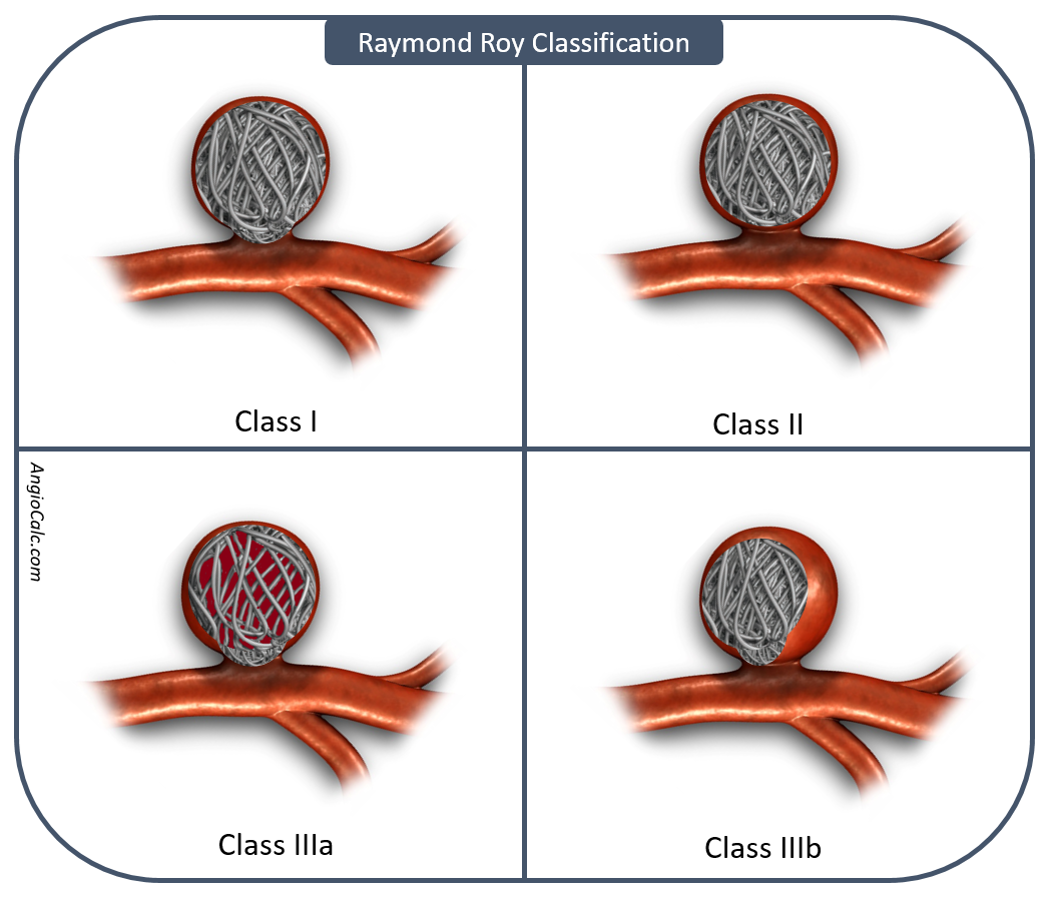NIH Stroke Scale Worksheet
Download the NIH Stroke Scale Worksheet
Raymond-Roy Occasion Classification (RROC)
Angiographic classification tool for grading occlusion of aneurysms treated with embolization (aka Raymond Class, Montreal Scale or Raymond Montreal Scale).
- Class I: Complete Obliteration
- Class II: Residual Neck
- Class III: Residual Aneurysm
- Class IIIa: contrast opacification within the coil mesh
- Class IIIb: contrast opacification outside the coil mesh
“Class IIIa aneurysms were more likely to improve to Class I or II than Class IIIb aneurysms (83.34% vs 14.89%, p<0.001) and were also more likely than Class II to improve to Class I (52.78% vs 16.90%, p<0.001). Class IIIb aneurysms were more likely to remain incompletely occluded than Class IIIa aneurysms (85.11% vs 16.67%, p<0.001). Class IIIb aneurysms were larger with wider necks while Class IIIa aneurysms had higher packing density. Class IIIb aneurysms had a higher retreatment rate (33.87% vs 6.54%, p<0.001) and a trend toward higher subsequent rupture rate (3.23% vs 0.00%, p=0.068).”
Mascitelli JR, Moyle H, Oermann EK et-al. An update to the Raymond-Roy Occlusion Classification of intracranial aneurysms treated with coil embolization. J Neurointerv Surg. (link)











